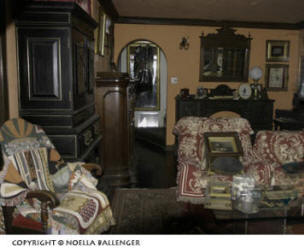
Overall of living room
Each experience in life can teach two things–what to do and what not to do. Recently, I had an experience that taught me both the “to-do” and the “not-to-do.” A close friend of the family died in July after an illness, and his wife died unexpectedly thirty days later. Because they hadn’t thought ahead, no estate plan had been prepared. A will or a trust is important for everyone. (Lesson 1: What Not to Do)
After much legal maneuvering, I was appointed Interim Administrator for the Estate. This is a really interesting position, as you assume full responsibility for safeguarding the assets of the deceased and continuing to run any business they had. The idea is to act in a fiduciary capacity to protect and maximize the assets of the estate. (WOW!)
Because there was a question about whether the cousin I represented would be the sole inheritor or if an heir search would turn up a closer relative to inherit, I decided that a part of my job would be to photograph the assets. In this way, I would prevent any questions from arising about my administration, and I would create a record for the one who did inherit. (Lesson 2: What to Do)
When you’re faced with this dilemma, how do you go about photographing assets in a home? And isn’t it also a great idea to have this record for the insurance company in case of a disaster? (More of Lesson 2). Let’s go through some of the steps to recording assets photographically. As you’re working, keep in mind that the focus of these photographs is not art but documentation designed specifically to record and identify.
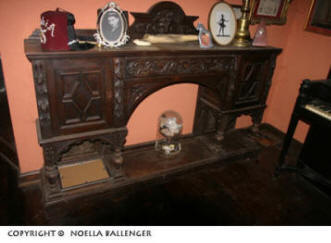
Single piece of furniture
The first question that needs to be asked is, “What are we trying to show?” Start with the overall shots. I took these images in a very deliberate way. Standing at a door, I began to photograph the room by moving the lens first to the right, then the center, and finally, the left. Be sure to overlap frame to frame. I also stood in the center of the room and began shooting a circle around the room, starting with a doorway. You want to show what’s in the room and where it’s located.
Next, move closer to capture a more detailed view. Detail is necessary for anyone to be able to identify the specific items in the photograph. If there is furniture or art work of value, try to take one photograph for each that includes the entire piece. If necessary, move in closer for additional shots. If there’s a “brand” such as a signature on a painting or a name on a piano, be sure to include that detail, as well.
Those are the basic techniques for recording a room, but what about special items of art, clothing, or jewelry? In the case of the estate that I was working on, the deceased performed in many musical shows. She collected interesting art pieces, lovely vintage clothing, and many things that made her home unique and quite remarkable. She had great style and a passion for dramatic touches. All of this needed to be documented.
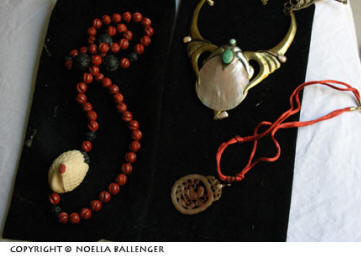
Overall of one lot of jewelry
The deceased also loved unusual jewelry and had many pieces that might not have had monetary value but were striking. I wanted to photograph those, as well. Carefully laying the items out, I first did an overall shot of the group and then did a close-up of the selected pieces. I don’t have any expertise in estimating the value of items, but I did take the time to describe some of them for her estate. I kept these small things in “lots” and packaged them together.
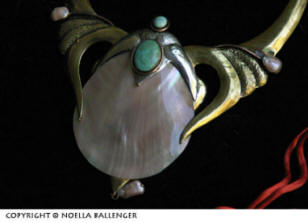
Single Piece of Jewelry
Doing something like sorting and labeling is time-consuming and tiring, so why did I make the effort? I was aware that other heirs might be entitled to assume the administration of the estate later. Regardless, I knew that a full and complete accounting would need to be made for the court. But I think there’s more to it.
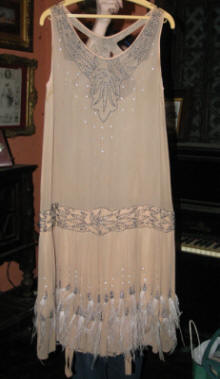
Vintage clothing
When someone dies and you have the responsibility of caring for his or her property, you have (in my opinion) an ethical obligation to treat his or her things with dignity and respect. Being the photographer gave me a unique opportunity to act in a responsible manner on behalf of the deceased.
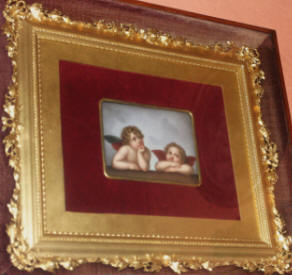
Valuable piece of art
Now that I’ve completed the assignment, I’m going to take the lessons I learned back to my home. I’m going to be sure that my estate plan is in order, and then I’m going to photograph all of my assets. I’ll put these photographs in a safe location outside of my home. I don’t ever want anyone I love to be forced to go through for me an experience like mine was. (Being pro-active is definitely more of the “what to do” lesson…and the time to do it is NOW!)
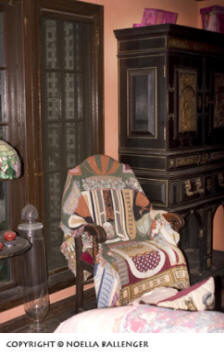
Remainder of images: Wall by wall of the living room
by Noella Ballenger

Leave a Reply